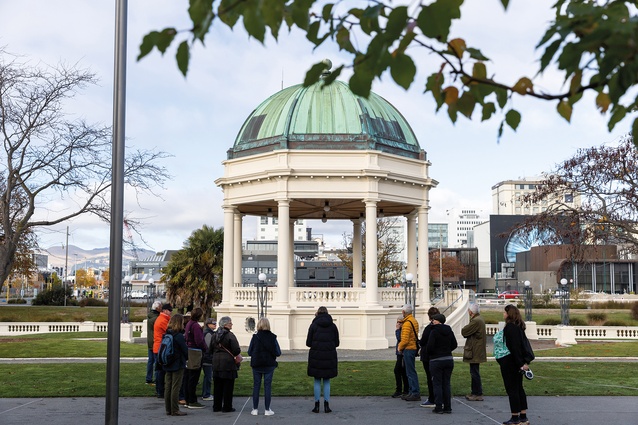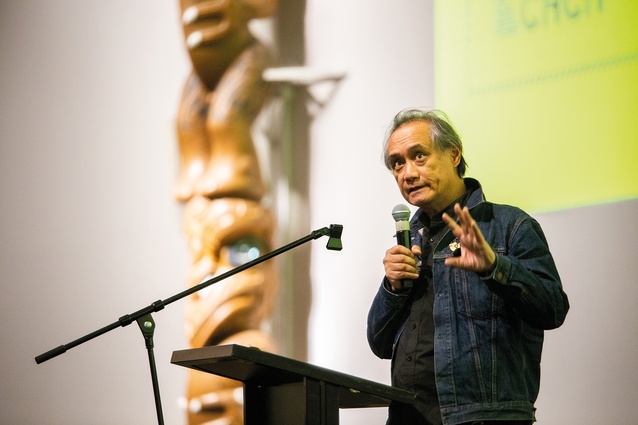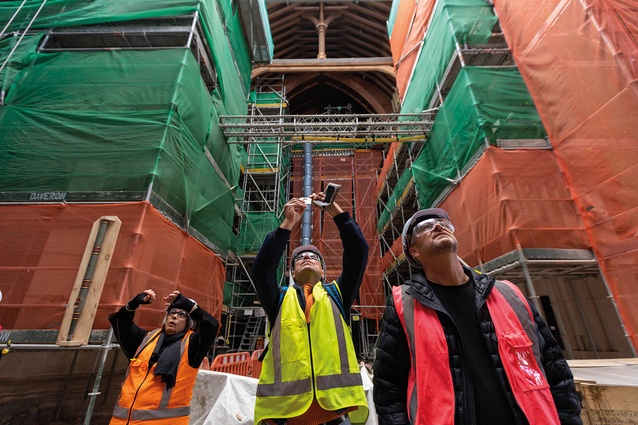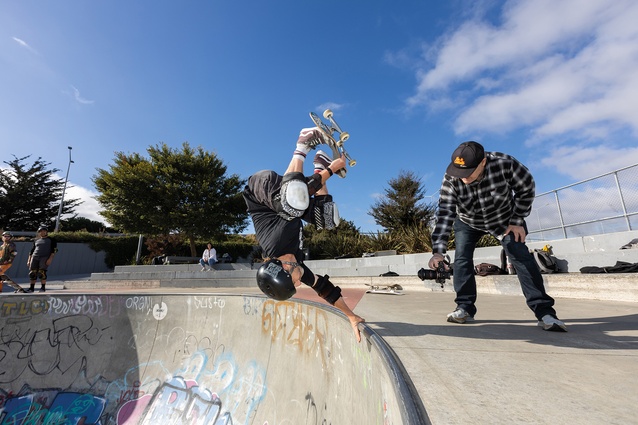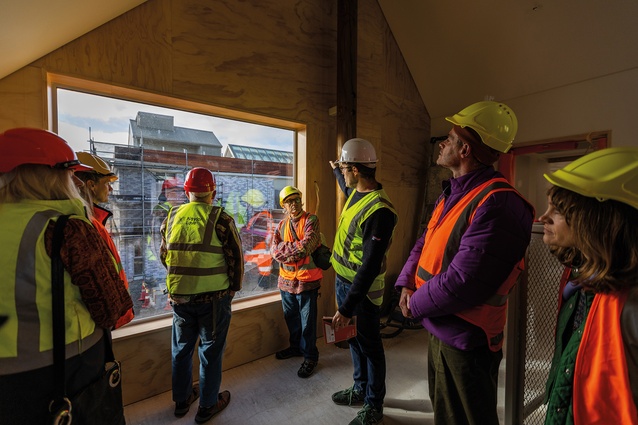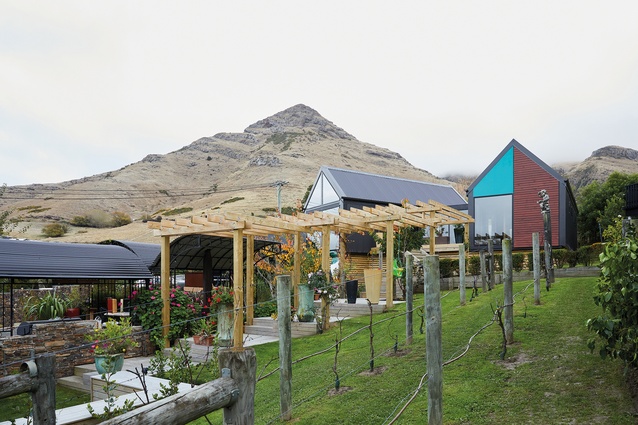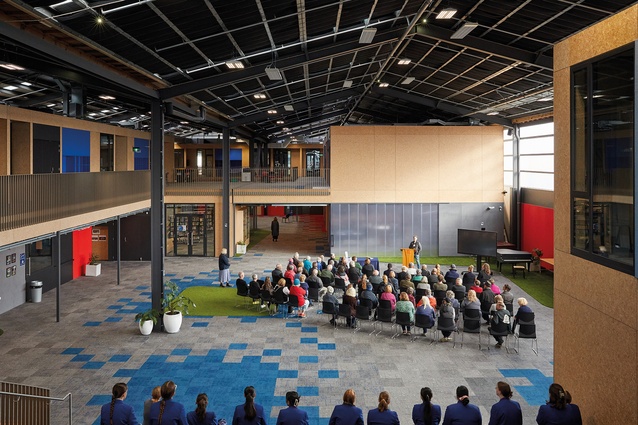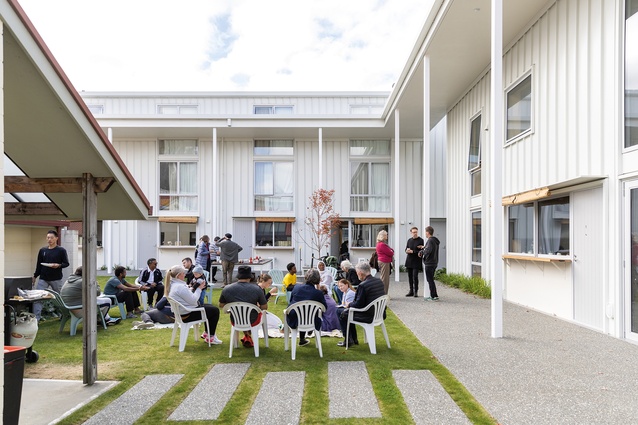Crossing Thresholds: Open Christchurch 2024
Architectural graduate Fritha Powell finds the continuing tradition of Open Christchurch both progressive and inspiring, with examples offering valuable lessons for the future.
This year’s Open Christchurch, organised by Te Pūtahi Centre for Architecture and City Making, saw the opening of more than 50 notable buildings and three designed landscapes around Ōtautahi as well as more than 40 additional activities take place from Friday 3 to Sunday 5 May.
Currently in its fourth consecutive year, the programme allows designed spaces to become porous, transparent and approachable. It is accessible; this is an event for anyone who has an invested interest in our past and future built environments.
‘Crossing thresholds’ has a twofold meaning. It represents the physical action of entering buildings and it also represents the concept of transgressing ideas: an apparent literary device that propels the plot forward. By opening the discussion and allowing for an honest, fully immersive experience, often guided by industry experts, Open Christchurch is a first-hand experience that makes you think, engage and react, either positively or negatively, to the spaces. Progression is as much about knowing what doesn’t work as what does.
Feeling like a tourist in my own city, I was privileged to stay at the Gothic revival Observatory Hotel at Te Matatiki Toi Ora The Arts Centre. Fuelled by a political agenda to demonstrate the importance of these structures to our city (there were another six buildings in the programme from The Arts Centre), the Historic Places Category 1 listed site, built in 1878, finds its future of funding unknown. As The Observatory Hotel demonstrates, these buildings are not only visually impressive but easily adaptable to fulfil modern functions.
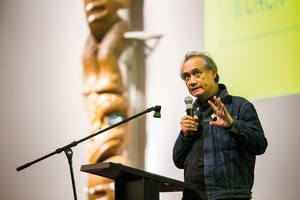
We were taken across oceans and home again with the opening event, a lecture by Professor Albert L Refiti on the ‘Roots and Routes of Pacific Architecture’, held at Te Puna Wānaka. The value of integrated design was evident as the examples of Pasifika fale progressed from the historic to the visualised. Architectural iconography was discussed and we were asked to consider what is iconic of our own historic built roots.
One of the three pillars of sustainability is social sustainability. Aligning with social sustainability is the concept of social capital and two projects in the programme epitomised this: Washington Way Skatepark by Krysta Ashwell, George Read and Civil Hunter, and the Youth Hub by Field Studio of Architecture and Urbanism. The Youth Hub is a national asset supporting the mental health and living conditions of our youth, through housing, support services, recreation and means of creativity, in a safe environment. The architecture is playful, functional and considered, a response from a programme entrenched in collaboration and consultation with user groups and stakeholders. It is to be completed in phases and is the construction of Dame Sue Bagshaw’s innovation.
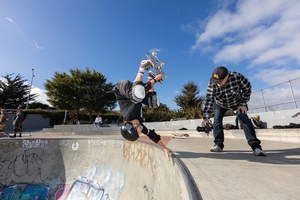
Washington Way Skatepark, opened in 1998 and rebuilt in 2014, featured in the programme as one of the designed landscapes. One of the most utilised public spaces in Ōtautahi, with features designed as replications from the central city, such as Cathedral Square, it is highly trafficked, not by a singular demographic but by all, including a multitude of ages and genders. Passive surveillance, the presence of families and a liveliness create a safe and social space.
Located in Phillipstown, a suburb with a diverse demographic make-up, a star-shaped form representing Te Hohepa Kōhanga Reo is recessed from the street front. The kindergarten, designed by Michael O’Sullivan, an architect contributing to the changing building fabric of Ōtautahi, can be defined by its bold colours and compelling narrative. Newborns start with the rising sun in the east and finish as six-year-olds in the west, as they circumnavigate the interior spaces.
Visiting three residential projects throughout the weekend took me to the Christchurch Modern era and to the future. As quoted on one of the visits, “We really are just pretending to live in other people’s houses”. An example of successful intergenerational living is the Korako Whānau Papakāinga. Rooted deeply to the expression of kaupapa Māori, designed by Royal Associates, the ancestral land at Rāpaki and the other surrounding anchor points were captured effortlessly as the site blends, without friction, into the whenua.
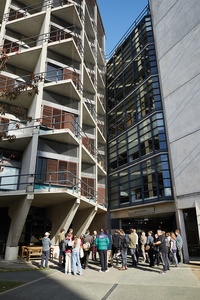
The A Love Affair with Christchurch Modern Houses event, in association with Heritage New Zealand, showcased a 2008 film titled Four Houses from Four Decades and was concluded by a panel discussion of four current owners of Christchurch Modern homes. It was chaired by Dr Rosemary Baird and questions moved from maintenance to sympathetic restorations and adaptions to modern demands: as noted in Common’s sensitive lounge and master bedroom extension to Lucking House. Signified by clean lines and restrained material palettes, Athfield’s Jones House and George Lucking’s dwellings were stunning examples of Christchurch Modern architecture.
Does Christchurch need a new tower built by a semi-controversial architect? One of the clever students from Write On – School for Young Writers seems to think so, in a very satirical way. The concluding New Foundations event was a storytelling performance by our youngest voices from Ōtautahi. Supported by Emma Johnson and Freerange Press, this was humorous, well-articulated and motivating. Firstly sharing their reflections on one of their favourite spaces, the rangatahi then recounted what they believed Ōtautahi needed for the future. I applaud their bravery; the dismissal of urban sprawl seen in many undefinable suburbs in Christchurch was a highlight. Look out for the digital publication soon to be released.
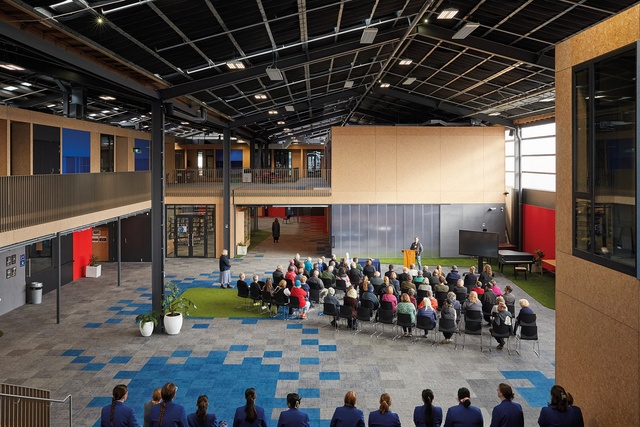
The new categories of mixed use and designed landscapes need to be acknowledged within the 2024 programme. If designed well, these will result in increased economic opportunity and population density: success markers of sustainable urban development. A mention also needs to be given to the exceptional adaptive re-use project by Sheppard & Rout: a 10,000m² repurpose of a former Foodstuffs distribution centre into an all-girls secondary school, Marian College. More than 800 people visited this project. It is a national first and demonstrates a unique low-carbon response to a global issue.
Open Christchurch is an unveiling of the buildings, landscapes and people that have helped shape our environment: the concepts, the ideas, the narratives and the lessons to be carried into the next projects. This event illustrates progression. It highlights our heritage and implies our bright future. When, in reflection, I simplify it, Open Christchurch is inspiring. I thank our designers, architects, industry specialists and consultants, and the enthusiasts and the public who demonstrate active investment in our city fabric. I encourage other cities to open their doors and allow more thresholds to be crossed.


